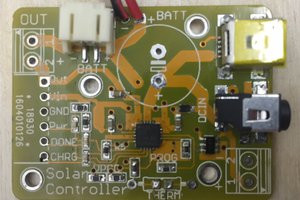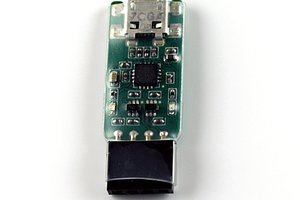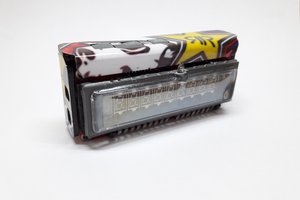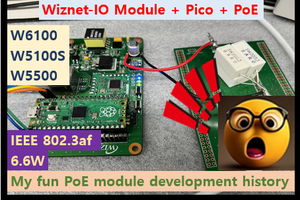This project is for an adapter board for nRF51822 Core Bluetooth Low Energy modules that I intend to use in both the PiChart display device and the wireless GPS & compass module.
The nRF51822 is a really nice, inexpensive (from €3.5 each for the ICs in single unit volume) very low energy chip which is both an ARM micro controller and a Bluetooth Low Energy (BLE) device.
You can buy cheap modules with the nRF51822 for under €5 on E-bay, known as nRF51822-Core. But they use 2 mm pitch connectors which are a pain, since they don't fit into breadboards.
There is a "motherboard" for these modules available, called BLE400. But it didn't fit my needs (I don't need the USB-serial chip on it, I can't choose what voltage to run it at, it doesn't have voltage shifters neccessary to work with the GPS and compass boards I bought, and it's pretty big (ca 10 x 5 cm).
So I decided to design my own adapter board that I could re-use in different projects, with footprints where I could mount additional components as I need them - LDO, voltage shifters, programming connector, reset button, LEDs, MOSFETS to turn off power to peripherals, and pads for headers so that I can connect it to a breadboard or a Raspberry Pi.
It's a 5 x 5 cm board (for the cheapest manufacturing option at Seeed Studios), with pads at 2.54 mm pitch for access to all pins, positions for headers so the protoboard can be placed in breadboards. One side has a pads for a double row header, so that the board can be mounted on a Raspberry Pi.
There's a footprint for a SOT-23-5 LDO, you can choose if you want to use it, and chose a Low Dropout Voltage Regulator (LDO, I designed it around a Microchio TC1014 series LDO) according to what voltage you want to run the nRF-Core module at. There's a jumper between the LDO and the nRF chip where you can measure the current use of the chip.
Since the nRF chip can be run at low voltages, but may need interfacing to higher voltage ICs, there are resistor voltage dividers. I'll be using it for serial interfacing to a 3.3-5V GPS with a serial interface.
I also added voltage shifters for bidirectional buses like i2c, using just a single MOSFET for each line, according to Philips Application Note AN97055.
There's a also a reset button.
I'll be posting the Eagle schematic and layouts in a GitHub Repo soon.


 Saimon
Saimon
 Ben Mo
Ben Mo
 Alan
Alan